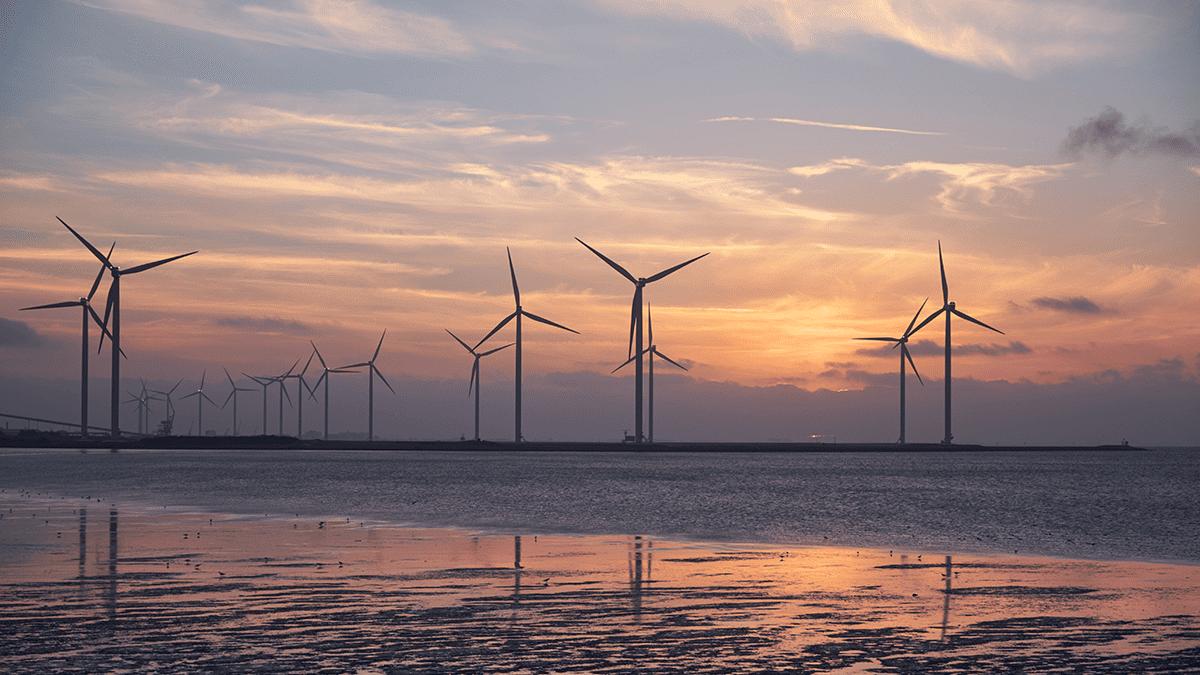Welcome to Engineer Academy where we’re exploring an A to Z of Engineering – everything from acoustics to zoos.
In each episode, we spin the wheel to find out what type of engineering we’ll be exploring with the help of Engers, our engineering expert.
You can listen to the full series of the A to Z of Engineering here.
Let’s take a look at Wind Farm Engineering.

Windfarms have become a common sight in the countryside and make a valuable contribution to producing green energy. Today, there are over 11 thousand wind turbines across the UK, generating enough electricity to power 8.4 trillion LED bulbs. How amazing is that! Now we all know that to make a wind turbine turn, you need wind – and a good supply of it. And one of the best places to find this is in the North Sea!
Wind turbines have been built in the sea for over 30 years. The majority are inshore which means close to the mainland where water is shallower and so installing the supporting platforms is relatively easy.

The various parts of the turbines are transported on large vessels, with cranes and lifting machinery putting them in place. Wind and waves rock the structures, and saltwater corrodes the supporting platforms. Also, being close to land, coastal birds can be injured by the blades and people living nearby can have their sea view spoiled by the turbines. So what can be done? An answer might be to go further out – to the Off Shore – around 12 miles from land, where the sea can be over 50 metres deep.
Being further away from land, the winds are much stronger which means the turbines work much harder and produce more energy. There are also fewer birds to be harmed by the blades.
The CHALLENGE though is that with water so much deeper and being farther away from land with very hostile sea conditions, how are the turbines built and maintained? New technology is providing answers with FLOATING wind turbines that don’t need to be secured to the seabed.
Now, as each wind turbine could be up to 300 metres high and weigh thousands of tonnes, you might be thinking how do you get something so massive and heavy to FLOAT! The answer again comes down to engineering – so let’s dive in and get the low down!
The science behind how massive structures float originated in Ancient Greece over 2,000 years ago, when Archimedes discovered that a body totally or partially submerged in water experiences a vertical upward thrust equal to the weight of the water dislodged.
Think about when you get into a bath – the water goes up as you sink in, right? Archimedes discovered that the weight of the water that’s displaced by your body is equal to the weight of something called the buoyant force. A ship displaces an amount of water weight equal to its own weight. If it displaced less water than its weight, it would sink. But even if physics helps structures to float – why don’t they fall over?
The secret is cables and anchors which tether the floating platform to the seabed. Currently, it is technically possible to install floating platforms in water that’s between 60 and 300 metres deep. Engineers are looking at extending this range to shallower water up to 30 metres, and deeper water up to 800 metres.
Back at our floating wind farm, anchors have already been dropped into the sea before the turbine and platform arrive. They have been built on land and are towed out by tugboats.

This is a much cheaper and simpler process than building the structures at sea. And because the anchors can be moved – the whole thing can be moved to a totally different place if windier waters are found.
Once up and running, the wind turns the blades and the turbine converts the kinetic energy – that’s energy from movement, into electricity which is transported by underwater cables to an offshore substation and from there to an onshore substation on the coast and finally to homes via the National Grid.

As you can imagine there’s a huge range of people involved in the process – from mechanical engineers who develop turbines, structural engineers who work on the enormous towers and platforms as well as specialists in electricity and energy.
And that’s our take on the letter F – it’s been fantastic!
If you would like to check out some other types of engineering, why not check out Farming, Factory, Fermentation or Field engineering!
Join us again next time to spin the wheel and explore another letter in the A to Z of Engineering!
Engineer Academy: A to Z of Engineering.
Created with support from a Royal Academy of Engineering Ingenious Grant
Add a commentA to Z of Engineering
Engineering is all around us! We’re exploring an A to Z of everything engineering from acoustics to zoos.
More From A to Z of Engineering






